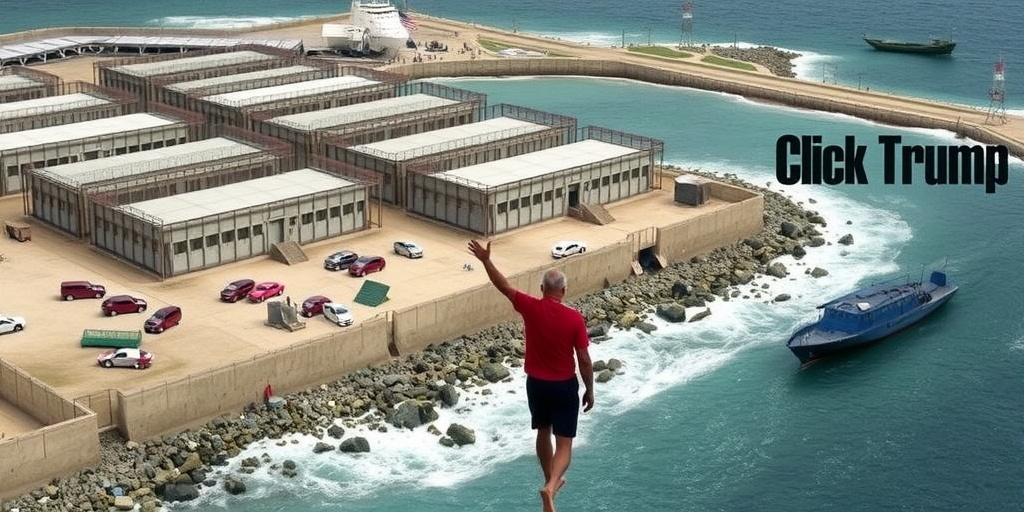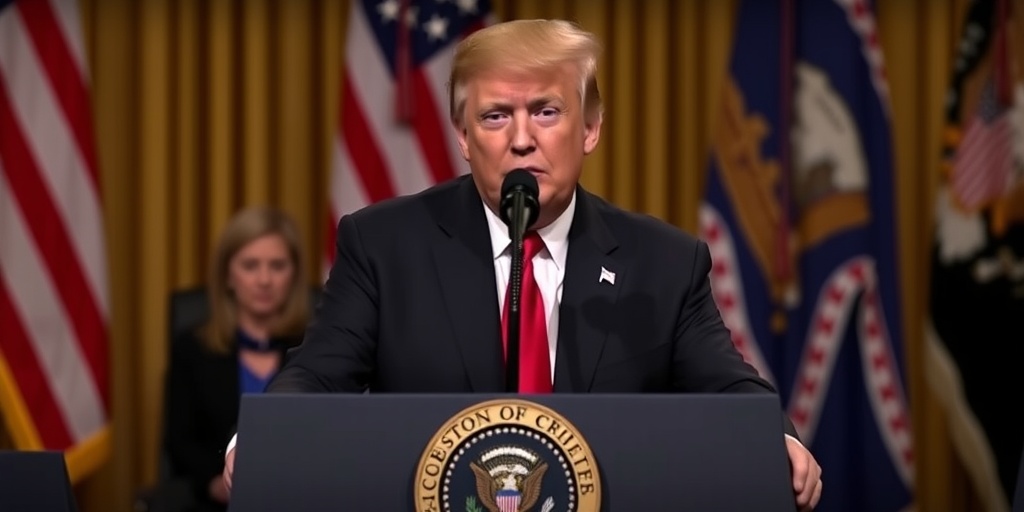Now Reading: Guantánamo Bay’s Role in Trump’s Immigration Crackdown
-
01
Guantánamo Bay’s Role in Trump’s Immigration Crackdown
Guantánamo Bay’s Role in Trump’s Immigration Crackdown

Title: Guantánamo Bay: Costs and Controversies Surrounding Migrant Detention
Two months following former President Donald Trump’s directive to prepare the U.S. Navy base at Guantánamo Bay for the potential accommodation of up to 30,000 migrants, the current reality presents a stark contrast to that ambitious goal. As of now, approximately 400 migrants have been housed at the facility, incurring significant costs to taxpayers that exceed $40 million.
In February, the situation peaked when the administration housed 178 Venezuelans at Guantánamo, marking the largest migrant group to occupy the base simultaneously. The operation is significantly staffed, with around 1,000 government workers—900 of whom are military personnel, while the remainder comprises immigration service agents and contractors—resulting in an extensive support ratio of five staff members for every migrant in the facility.
During a Congressional testimony this week, senior Pentagon officials shed light on the ongoing operation at Guantánamo, revealing several critical pieces of information. One of the most pressing questions posed during the hearing was whether Guantánamo was truly equipped to handle the influx of 30,000 migrants. Admiral Alvin Holsey, head of the U.S. Southern Command, succinctly stated that to manage such a considerable number, the Pentagon would need to mobilize over 9,000 personnel to support the Immigration and Customs Enforcement (ICE) staff managing the facility. He emphasized, “And we have not been told to do that,” highlighting the lack of directives from higher authorities.
Reassuringly, military officials informed Congress that the current infrastructure at Guantánamo allows for a maximum of 180 migrants between two designated sites: Camp 6, where suspected members of Al Qaeda were previously housed, and the Migrant Operations Center, a dormitory-style facility. Given these limitations, the prospect of accommodating 30,000 migrants appears virtually unattainable under current configurations.
So, why is the Guantánamo facility being utilized for housing migrants at all? According to Robert G. Salesses, a senior Pentagon official, the facility’s use is a response to a pressing need for additional resources for ICE, which currently can accommodate about 45,000 “high-threat illegal aliens.” He noted, “I do think we’ll be continuing to use Gitmo for some time until ICE has more capacity to house high-threat illegal aliens,” referring to the facility colloquially.
As of last week, the detention situation remains fluid, with ICE recently reporting that 45 migrants are currently held at the base, including 36 in the now notorious prison facility. All individuals at Guantánamo have purportedly been processed with final orders, marking their paths to eventual repatriation or deportation.
The administration has facilitated the return of migrants to various origin countries, including Venezuela, El Salvador, and most recently, Nicaragua. Just last Thursday, ICE repatriated 44 migrants from Nicaragua, sent back via charter flights originating in Louisiana, underscoring the ongoing operations and necessity for repatriation efforts. Significantly, data from within the administration indicates that fewer than half of the migrants sent to Guantánamo since February 4 have been allowed to return to the United States, with many being deported to other countries, including Brazil and Colombia.
One of the more controversial aspects has been the existence of tents set up in anticipation of accommodation needs. Despite early preparations, which involved erecting 195 tents shortly following Trump’s executive order, officials reported that these structures have never been used to house migrants. Wasted resources has sparked criticism, as it is believed that these tents account for over $3 million of the $40 million spent on Guantánamo’s migrant operations so far.
Pentagon security officials opined that the tents could not provide the adequate safety required for medium- or high-risk detainees, primarily due to a lack of necessary security measures and concerns about their safety during the forthcoming hurricane season. Senator Jack Reed of Rhode Island criticized the need for these tents as more of a political gesture than a practical solution, suggesting that “they shouldn’t have been erected in the first place.”
As the situation develops, the implications for Guantánamo Bay as a detention facility are still unfolding. The ongoing debates regarding capability, security, costs, and administrative logistics encapsulate a complex and evolving narrative surrounding the handling of migration and detention in the United States, all while taxpayers bear the financial burden of these operational undertakings. As stakeholders grapple with these pressing issues, the conversation remains crucial in determining the future of Guantánamo Bay as a facility for migrant processing and detention.
Stay Informed With the Latest & Most Important News
-
 01New technology breakthrough has everyone talking right now
01New technology breakthrough has everyone talking right now -
 02Unbelievable life hack everyone needs to try today
02Unbelievable life hack everyone needs to try today -
 03Fascinating discovery found buried deep beneath the ocean
03Fascinating discovery found buried deep beneath the ocean -
 04Man invents genius device that solves everyday problems
04Man invents genius device that solves everyday problems -
 05Shocking discovery that changes what we know forever
05Shocking discovery that changes what we know forever -
 06Internet goes wild over celebrity’s unexpected fashion choice
06Internet goes wild over celebrity’s unexpected fashion choice -
 07Rare animal sighting stuns scientists and wildlife lovers
07Rare animal sighting stuns scientists and wildlife lovers





















